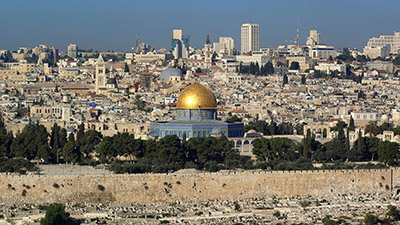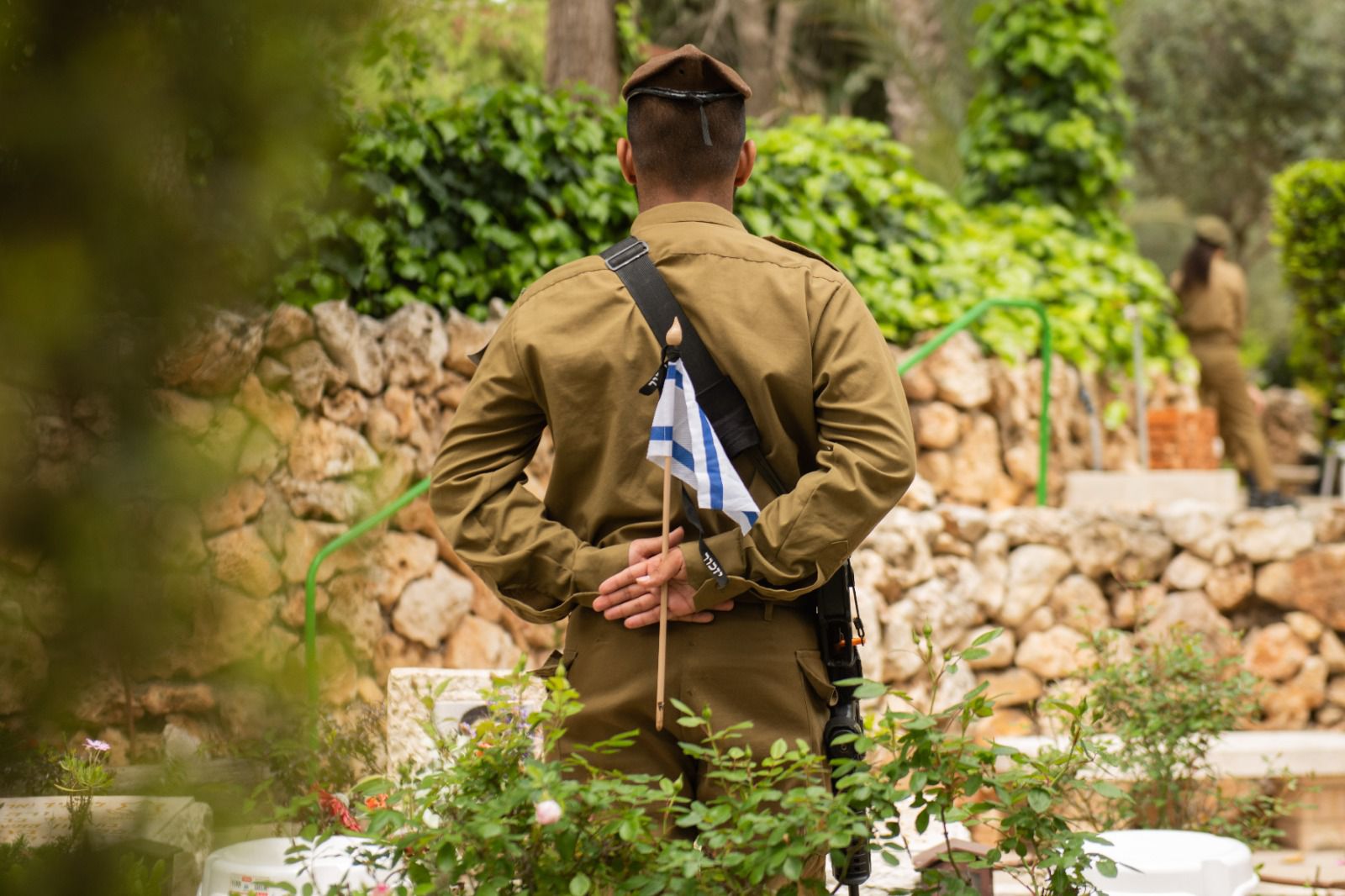
(Makor Rishon/Exclusive to JNS) For several months now, Israel’s National Security Council has been examining multiple plans that would change the municipal boundaries of Jerusalem. Each proposal tries to deal with the demographic red line toward which the city is racing at full speed: a population comprised of 60 percent Jews and 40 percent Arabs.
It’s unclear when the National Security Council will conclude its work, which is an urgent national strategic matter by all standards. Any decision will require overcoming political and bureaucratic obstacles. Since the Trump administration—which takes a more sympathetic stance on Israeli construction in disputed territories than preceding U.S. administrations—might have only three years remaining, those who place Jerusalem’s Jewish character before all other considerations need to speed up their advocacy process.
One of the plans to cope with the demographic crisis, proposed by Member of Knesset and Minister of Intelligence Yisrael Katz, suggests including communities surrounding Israel’s capital under the umbrella of metropolitan Jerusalem, driving up the number of Jews in the city. The chief opponents of the plan are haredi Jews, who fear losing the electoral control they hold in the capital.
Two other plans, one proposed by Likud MK Anat Berko and the other by Minister of Jerusalem Affairs MK Ze’ev Elkin, deal with the Arab neighborhoods of Jerusalem.
Berko proposes transferring some neighborhoods in a gradual process to the Palestinian Authority, thereby achieving three goals with one move: to gain political cachet with the international community, to improve the demographic balance of Jerusalem and to remove the responsibility for the negligence in the development of large portions of the Arab side of the city. But given the current right-wing coalition’s sensitivity to any accusation of dividing Jerusalem or handing territory to the PA, her plan has no chance of being implemented.
Elkin’s plan focuses on the Arab “encircled neighborhoods,” which are officially part of municipal Jerusalem but have been located beyond Israel’s Judea and Samaria security fence for 15 years. The proposals are mainly aimed at the Shuafat and Kfar Akev refugee camps north of the city. For years, Elkin has maintained that “practically speaking, these areas are extraterritorial.”
In his book “Urshalim,” journalist Nir Hasson describes that Israeli police “have ceased to provide security and law enforcement services” to the encircled neighborhoods.
“The police don’t enter the neighborhoods, even when a murder has occurred, and certainly not for lesser calls of distress,” Hasson writes.
“Following their lead, the other Israeli authorities have also abandoned them: the municipality, the infrastructure suppliers, firefighting and rescue services, ambulances, construction supervisors and road planners. They all stay on the other side of the fence…and to every one of them, from the mayor and government ministers to the last of the residents of the refugee camps, it was clear that they left the area never to return.”
Elkin’s plan is based on a map delineated several years ago by Nadav Shragai, a senior researcher at the Jerusalem Center for Public Affairs think tank. At the heart of the map is the creation of two independent regional councils to manage the encircled neighborhoods, placing them within Israeli sovereignty and leaving political borders untouched. Several weeks ago, Shragai completed an updated version of his plan, and it is published here for the first time. Among the new revelations are statistics about the shocking population explosion in the encircled neighborhoods and the chaos that reigns there.
First, the demographics: Since the security fence was built around Jerusalem in 2003, the study reveals that the number of Arab residents in the neighborhoods outside the fence has tripled to 140,000, which is 14 percent of Jerusalem’s total population. Compared to this incomprehensible leap, the Arab neighborhoods within the fence grew 71 percent, a number high in its own right, but still much lower than the 300-percent growth outside the fence.
It’s no less important to note that the skyrocketing population growth in the encircled neighborhoods is happening because of a lack of governance. Without supervision, buildings of 10-12 floors are constructed in extremely crowded spaces, violating the law. The construction and service standards are extremely low, including the budgeted supply of water, which sometimes arrives only twice a week. The infrastructure for sewage and water mingle with each other and the roads are far too narrow to carry the traffic load.
“The conditions in these neighborhoods have depressed the prices of apartments to 400,000 shekels ($116,000) and less, which turns them into magnets for residents of Judea and Samaria, as well as for residents of other neighborhoods of Jerusalem. Prices for apartments in these neighborhoods, as well as other Palestinian cities, are generally much higher,” writes Shragai.
According to Shragai, an estimated 30-40 percent of the residents of the encircled neighborhoods are not from Jerusalem, but from Judea and Samaria. With the lack of any governance, there is nothing to prevent their migration to Jerusalem, and there is nobody to prevent their inclusion in the Israeli population registry.
“There is a merger taking place between the populations,” Shragai writes. “They marry each other, and the children of the marriages, according to Israeli law, are legal residents of Jerusalem.
“On the other side of the enormous growth in the Arab population, the Jewish population continues to shrink. The high birth rate amongst the Arabs, in conjunction with net emigration of Jews from Jerusalem—more than 400,000 Jews have left Jerusalem in the last three decades—has slowly eroded the Jewish majority, which today stands at a mere 59 percent.”
“We are rapidly approaching the danger line of a 50-percent-Arab population in Jerusalem,” warns Shragai.
Public criticism of the neglect of the encircled neighborhoods has recently pushed the municipality to take several steps to remind the residents that they are part of the city. Jerusalem Mayor Nir Barkat is opposed to all plans that attempt to disown the neighborhoods, and it appears that his fear of their progress led to improved garbage removal and establishing police stations that are intended to provide solutions to standard citizen complaints.
“The budgets of both the city and the government were expanded… Hagihon, Jerusalem’s water utility, extended their services in the Shuafat refugee camp and improved the service to its residents,” reports Shragai.
Israeli security services have also recently changed their mode of operations in these areas. But in Shragai’s view, these changes “are just a drop in the bucket, after the neglect of nearly 50 years. There is no way to overcome the enormous gap, other than by establishing separate municipal authorities. The neighborhoods beyond the fence have become a demographic time bomb and a bubble of distress, crime and terror. In the wave of terror of recent years, the involvement of residents of these neighborhoods is several times higher than their percentage of the population. What the municipality of Jerusalem hasn’t done for the past 50 years, they are unable to do today.”
Opposition to Shragai’s proposal comes from the political right, including influential Jerusalem residents such as Arieh King and David Be’eri, who fear the political implications of the plan.
Shragai and Elkin respond that sitting on one’s hands at a time when all the warning signs are flashing will endanger the capital’s Jewish character. They argue that the proposal is in no way a division of Jerusalem or a surrender of any Israeli sovereignty, but rather a change in municipal status that will ultimately give Israel even more control than it has today.
“My main concern is demography,” says Elkin. “Establishing a separate municipality is the guarantee that will preserve the Jewish majority and the unity of Jerusalem. If we fail to adopt the program, even more dangerous approaches—like those of Ehud Barak, Haim Ramon and Bill Clinton—may be adopted. Those are dangerous plans.”
By Ariel Kahana
Ariel Kahana is the diplomatic correspondent for Makor Rishon, where this article was originally published. The English translation of this article is available exclusively through JNS.












